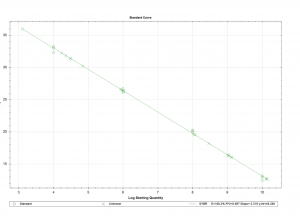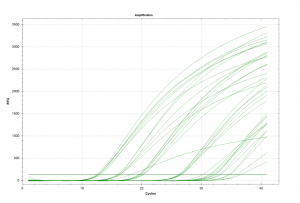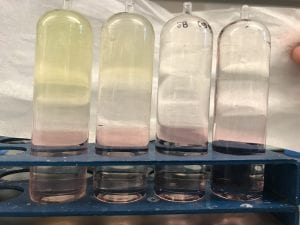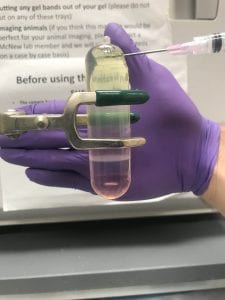I can’t believe we only have two weeks left! The time has definitely gone by really fast!
This week was focused on figuring out if we actually made virus. The actual process takes a lot of time because we started making this during my first week and its now the 4th week. To do this we had to do a separation process and qPCR. I was very nervous because its not until the qPCR that we are able to see how much virus we actually made (also proves that we have been working with something for the past 3 weeks). Last week before our harvesting of cells we knew our cells had some virus in them since they also had the GFP gene (glowing cells). After harvesting it was time to lyse the cells and separate the virus from everything else (cell debris, cells DNA, RNA, etc). This process is done using Iodixonal tubes. You must layer the tubes using different concentrations of Iodixonal solution and after ultracentrifuging them, the virus concentrates itself in the 40% layer.
The process of layering the tubes was stressful because you start with the 15% and work your way to the higher percentages. Since you want to make sure you have clear layers you must go at a speed of 1ml per 10 seconds—- very very slow…After the layering and centrifuging, you must insert a needle on the top of the tube to let air out and a needle at the 40% layer to remove the virus. This was also very tough because you have to be careful not to go through and when removing the virus you also need to be careful to not absorb the white band above the 40% layer because that is more cell debris (you don’t want that). When this is done you are left with about 3ml of solution that has your virus– well, you are still not sure how much virus you have so qPCR is next.
For qPCR you must clean everything with bleach because you want to prevent your sample from being contaminated. We had to clean our sample a bit using NaOH and HCl, and some heat and then we put it in our wells. This process takes a bit of time because you have to be careful to micropipette just what you need. Some of the solutions you have to use are viscous and drops stick to the tip. You have to always pay attention and white any excess off because having an extra microliter can affect your reading. After micropipetting everything into the wells, these are taken to the qPCR machine which does all the work and gives you a lot of data after two and a half hours. 

And….. the qPCR machine told us that we actually made 1.58E11 viral genomes per ml. My mentor said that this was a good result and our next step is to clean the sample further so it can then be used for Transduction. After 4 weeks of work I am so glad that we got some virus and it will be used for the research the lab is doing.



